


More tones are needed to address the problematic interval of the tritone, and to provide more leading tones. But where should these additional tones come from? One simple method of expansion is mode mixture, which may be illustrated using the Dorian, Aeolian, and Mixolydian modes. Whereas modes other than Dorian have been shown to shift the tonic to letters other than D, alternate versions of existing tones are found when D is used as tonic in multiple modes.
| Aeolian |  |
| Dorian |  |
| Mixolydian |  |
How should the alternate tones be labeled and notated? Although historically it took centuries to reach a definitive answer to this question, we can arrive at the solutions in a few simple steps, including some historical facts to inform our understanding.
The tritone F - B, being an Augmented Fourth, requires diminishment in order to return to a the state of a Perfect Fourth. Although raising the lower tone would achieve this, historically, the onus was placed on the upper tone. To derive the correcting tone, a mixture of the Dorian and Aeolian modes may be used. The submediant in Dorian, 27/16, corresponds to the note B, a Major Sixth above the tonic.

The Aeolian mode differs from Dorian by one tone only; the lower submediant 128/81, or Minor Sixth, which replaces 27/16, the Dorian B.

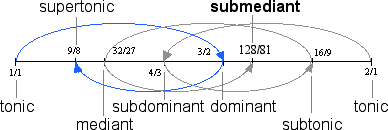
Previously, Aeolian was shown to shift the tonic to A; however, if D is maintained as the Aeolian tonic, an alternate version of the tone normally labeled as B is found.

In certain contexts, particulary those involving the tritone between F and B, the lower tone 128/81 may sound more suitable for B than the Dorian B, 27/16. Both tones are given below.

In early Western music, the note B was interpreted in two ways, either as representing a higher or lower tone, based on the context of the music. The higher B was said to have a harsh sound, while the lower B was said to have a soft sound.
| Dorian |  |
| Aeolian |  |

References to two B's are found in Western treatises dating from the 10th century, with precedents traceable to the ancient Greeks. From the 12th through the 16th centuries, the practice of using the appropriate B based on context was called ficta, which means false. The term false notes is still sometimes used to describe the performance of notes other than those written down by the composer.

Eventually, two symbols were introduced to specify either the soft B or the harsh B, both resembling the letter b either with round or angular edges. The round b was called the rotundum and the angular b, quadratum.

In 16th century Germany, printers used the letters b and h to represent the rotundum and quadratum, and to this day in German music theory, the harsh B represented by the h quadratum is in fact called H, while the soft B represented by the b rotundum is called B. Over about five centuries, the rotundum and quadratum developed into the modern accidentals. The rotundum became the modern flat.

Both the modern natural and sharp are descended from the quadratum.

The natural and sharp were originally used interchangably to indicate the harsh version of B; however, by the 18th century the natural was used to indicate an unmodified or natural note, which could be lowered by a flat or raised by a sharp. This three stage system is shown below.
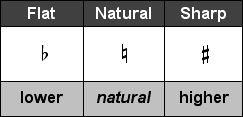
In early practice, a rotundum or quadratum could be placed anywhere in the general vicinity of a given note; however, by the 18th century these symbols came to be placed directly to the left of a note. While natural notes do not require the natural symbol, in modern practice a natural note which follows a flat note requires the natural symbol, which is said to cancel the lowering effect of the preceeding flat.
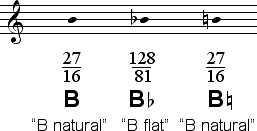
Inclusion of both versions of the note B creates a scale of eight tones, as shown below.

Mixture of the Dorian and Aeolian modes thus results in an asymmetrical system of seven naturals and one auxiliary flat.


The two submediants are called minor and major, corresponding to the two qualities of available sixths.
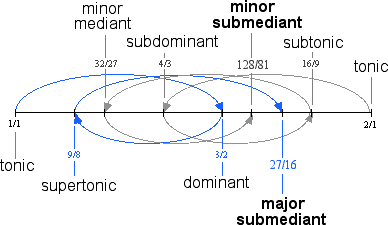

Generally, B was useful as an upward leading tone to C, while B
 was useful as a correction of the tritone
against F, as well as a downward leading tone to A.
was useful as a correction of the tritone
against F, as well as a downward leading tone to A.
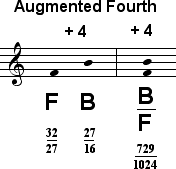
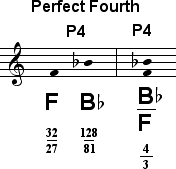
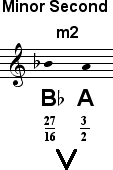
Use of both B's in Dorian allows for both the natural Major Sixth and the auxiliary Minor Sixth.
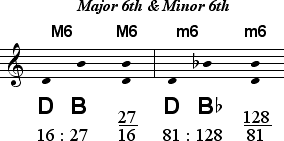
NEXT: Leading Tones